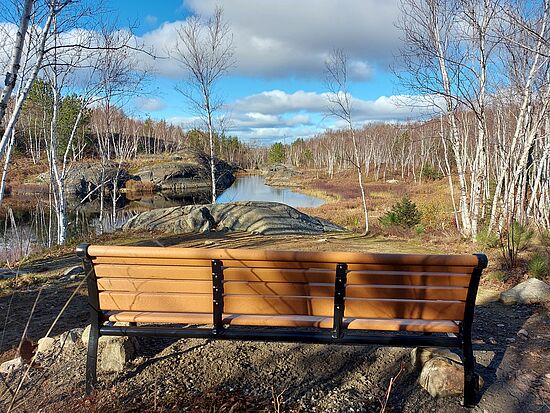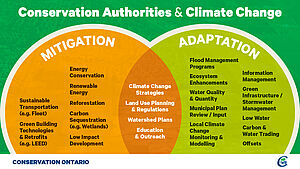Addressing Climate Change
We’ve Learned That The Impossible Is Actually Possible - So, Let’s Get To It
Wrestling with pandemic conditions for the past year and a half actually provides us with an important opportunity. It has shown us that the impossible is possible.
- People can make drastic changes to their behaviour
- Governments can work together for a common goal, and most importantly
- Nature Matters
These are important lessons to remember during the 26th UN Conference on Climate Change which is underway right now.
Pundits say the recent Federal cabinet shuffle for Natural Resources and Environment Canada and Climate Change ministries signals that they are starting to put the ‘pedal to the metal’ in addressing climate change.
Let’s hope so because conservation authorities have been ready to help for a long time now and have actually already been toiling away in local watersheds monitoring conditions and building program and project partnerships that already address climate change impacts. They can do so much more.
Conservation authorities are quite familiar with climate change impacts. As a network of local watershed management agencies, they’ve been tracking local watershed conditions through decades of monitoring. Here’s some of what they’ve been seeing:
- more frequent severe weather with extreme rainfall creating flood and erosion risks
- threats to water quality and supply
- rising temperatures and changing precipitation patterns
- degraded biodiversity and habitat loss
- lowered river flows and warmer surface water temperatures
- fluctuating Great Lakes water levels creating more shoreline hazards such as erosion
A few years ago, conservation authorities started issuing watershed report cards that look at surface water quality, groundwater quality, and forest conditions. The grades are based on provincial and federal standards and, in 2018, Ontario managed to actually get to a combined C grade. But it’s been taking a lot of effort and investments to maintain a C grade and not dip lower.
Conservation authorities are good partners for addressing climate change in one of the most populated provinces in Canada. They are Ontario’s second-largest landowners (next to the Province) and they are a network of community-based watershed management agencies delivering watershed management programs across the province. They rely on working in collaborations with others and they are great at leveraging human and financial expertise, and resources. They are also closely connected with their communities.
Next to the Province, conservation authorities are the second largest landowners in Ontario and they have lots of ‘green assets’ on these lands (forests, wetlands, grasslands, and waterways). In addition to protecting important ecosystems, habitats, and water sources, their conservation lands also help to cool temperatures, regulate flooding, protect water quality – and also important – provide a regenerative respite for the more than 8 million people who visit their trails and programs every year. Throughout the pandemic, people have flocked to their local conservation areas to recharge themselves mentally and physically.
All of these factors make conservation authorities natural partners in any broader climate change strategies and initiatives.
When it comes to climate change, conservation authorities use their watershed programs to apply both a mitigation and adaptation approach.
Key to their success is the integrated watershed approach (IWM) they use which is simply managing what we do on the land in order to protect and restore important natural resources such as forests, wetlands, grasslands, lakes, rivers, streams, and all sorts of other biodiversity. Basically, they manage upstream activities for downstream benefits.
Conservation authorities are spread across the province, they come in different sizes, vary in complexity, and they don’t always offer all the same programs. This is a GOOD thing. They respond to local needs and when you roll up all the outcomes from this work, it can provide quite a punch province-wide, delivering multiple environmental, economic, and health benefits.
Author: Conservation Ontario staff

